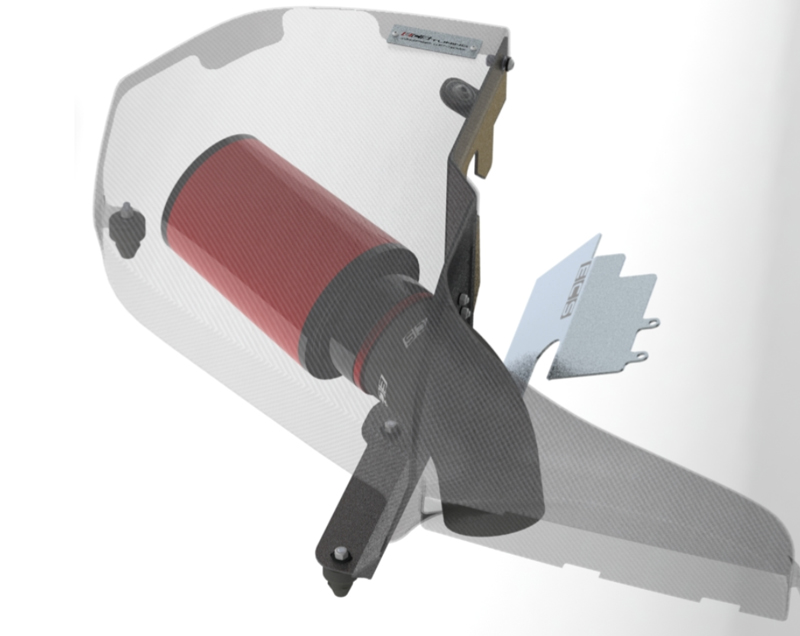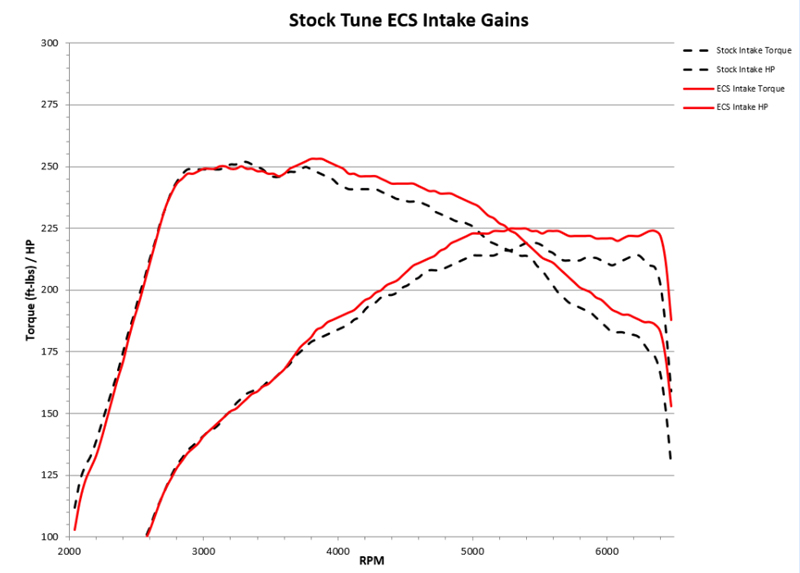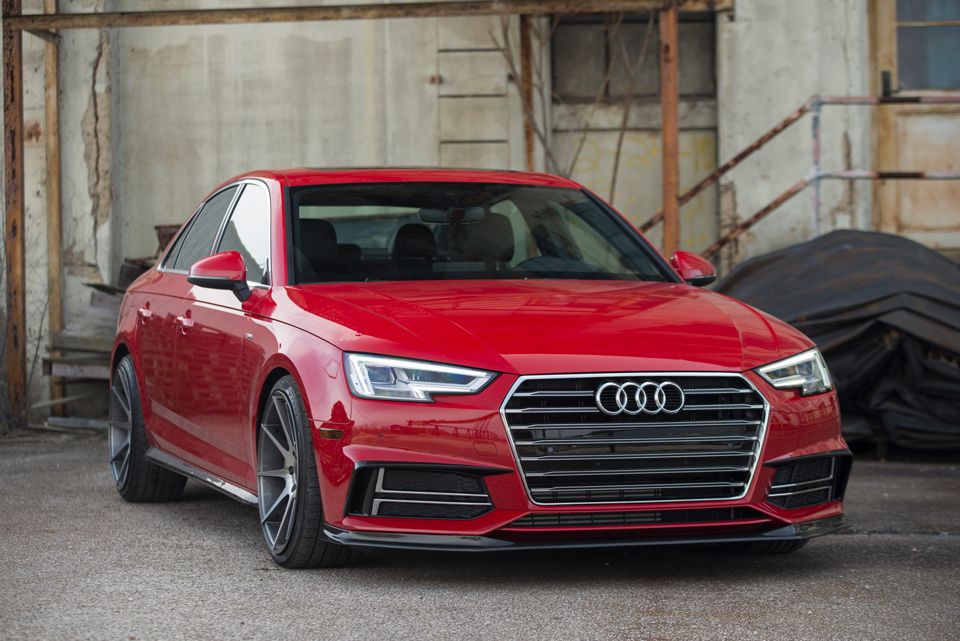If you have ever modified a car, then you are most likely well aware of the age-old argument “do aftermarket intakes add any real power gains?” Several YouTubers, bloggers, and self-proclaimed experts have weighed in on the argument. Despite miles of information regarding the subject, there is still a distinct divide between camps. There are those who insist the factory airboxes in vehicles perform identically to aftermarket intakes, and those who claim horsepower and torque are trapped in the restrictive factory designs. We at ECS have been drafting, designing, engineering, testing, and producing performance intakes since our earliest foray into aftermarket modification world, so we decided to share our data to settle the debate conclusively.
Our most recently developed performance induction system is the B9 A4 Kohlefaser & Luft-Technik Cold Air Intake. The 2.0T TFSI-powered B9 A4 produces a respectable 249BHP and a whopping 273 LB-FT of torque without any modifications and utilizing a factory tune. Our Dyno numbers confirmed those figures over an average of identical tests to determine a scientifically accurate baseline. While the B9 A4 2.0T pushes the upper limits of what should be possible from such a small displacement, we felt improvements to the induction system would provide power increases.
Our Objectives
The goal of this intake development and all other intakes we design is primarily oriented around functionality. We design our induction systems to function at optimal efficiency and demonstrate peak output for the intended use. In this case, our intakes are engineered to provide the highest power gains, most consistent pressure, and to minimize the temperature of induction air. These intakes are then tested in simulations, on the Dyno, and finally, on the street. Our combination of rigorous and thorough research and development procedures ensure the collection of accurate data in all situations, including the often unpredictable real world.
A secondary goal which shares nearly equal importance to functionality is the appearance of our intake system. A part that functions perfectly should also look as though it is the pinnacle of function. Our designs include a fit and finish to give the intake a functional, yet incredibly attractive, style. Even hardware and fastener locations are taken into consideration in order to grant easy access without compromising the aesthetics of the intake, heat shield, or beauty cover.
Of course, all our intake kits include every necessary nut, bolt, washer, fastener, and all other hardware for a complete and total installation out of the box. While this does not speak to our design, exactly, it does demonstrate our interest in ensuring your car is equipped with everything needed to improve performance without the headache of tracking down bolts or resorting to zip-ties in order to install your new parts.

Stock versus Luft-Technik
Returning to the question at hand, what did we find about our B9 A4 intake from all that development, simulation time, and testing?
Our final iteration of the intake post-development was put to the test against the stock assembly. We established yet another average between several successive recordings on the Dyno in order to guarantee accuracy in the factory figures with which we compared our intake. The next Dyno session, which immediately followed the previous stock runs, included our Luft-Technik intake. With the stock tune and otherwise stock engine, our induction system gained +11WHP and +10 FT-LBS WTQ when averaged with all recordings on the Dyno. Impressive numbers, to say the least, which can be observed on the Dyno sheet below.

These noteworthy gains were consistent across the usable power range on stock management, as well as an APR tune. The APR software tune alone significantly increased the horsepower and torque at the wheels on our Dyno, but there was more left to squeeze from the little turbo four-cylinder. After successive back-to-back runs on the APR tune with the factory airbox to establish our baseline average, we switched to the Luft-Technik intake and were once again presented with average gains of +5 WHP and +9FT-LBS WTQ with the APR Stage 1 ECU upgrade. You can observe our Dyno figures for these runs below.

Pressure Drop Data

With the most pressing question of power increases measured and accounted for, we believe we have seen definitive, empirical, and surprising evidence in favor of a properly designed intake which utilizes improved flow, decreased induction air temperatures, and a more consistent atmospheric pressure across the intake filter. While all intakes and engines perform slightly differently, these figures are within the range of consistent averages found on all our Luft-Technik intake systems across all supported models. Of course, there are distinct differences in performance where some outliers produce comparatively low power increases, and some offer relatively high power gains, but on average, consistently improved figures on our products match closely to the Luft-Technik Intake System designed for the B9 A4 2.0T TFSI.
Have you found something different? Do you have a question, comment, or suggestion? Let us know in the comments below or on social media! We encourage you to share this information with your friends using the buttons below and hope to see your input as we build a better blog.
Interested in purchasing?
Luft-Technik Intake
Better sound and proven performance!






